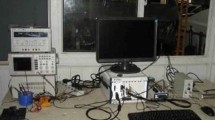Abstract
In the early design stage of a vehicle, simulation of interior noise is useful for assessment and enhancement of the noise, vibration and harshness (NVH) performance. Traditional transfer path analysis (TPA) technology cannot simulate interior noise since it uses an experimental method. In order to solve this problem, hybrid TPA is employed in this paper. Hybrid TPA uses simulated excitation force as the input force, which excites the flexible body of a car at the mount points, while traditional TPA uses the measured force. This simulated force is obtained by numerical analysis of the finite element (FE) model of a powertrain. Interior noise is predicted by multiplying the simulated force by the vibro-acoustic transfer function (VATF) of the vehicle. The VATF is the acoustic response in the compartment of a car to the input force at the mount point of the powertrain in the flexible car body. The trend of the predicted interior noise based on the hybrid TPA corresponds very well to the measured interior noise, with some difference due to not only experimental error and simulation error, but also the effect of the airborne path.
Similar content being viewed by others
References
Auweraer, H. V., Mas, P., Dom, S., Vecchio, A., Janssens, K. and Ponerrle, P. V. (2007). Transfer path analysis in critical path of vehicle refinement: the role of fast, hybrid and operational path analysis. SAE Paper No. 2007-01-2352.
Kim, B. G. and Ih, J. G. (1993). In-Situ estimation of an acoustic source in an enclosure and prediction of interior noise by using the principle of vibroacoustic reciprocity. J. Acoustical Society of America 93,5, 2726–2731.
Kim, S. J., Kim, S. G., Oh, K. S. and Lee, S. K. (2008). Excitation force analysis of a powertrain based on CAE technology. Int. J. Automotive Technology, Submitted.
Kim, S. J., Lee, J. Y. and Lee, S. K. (2007). Noise refinement of a vehicle by reduction of the axle gear whine noise based on structural modification using FEM and BEM. Int. J. Automotive Technology 8,5, 605614.
Ko, K. H., Kook, H. S. and Heo, S. J. (2006). New technique in the use of vibro-acoustical reciproicity with application to the noise transfer function measurement. Int. J. Automotive Technology 7,2, 173–177.
Lee, J. H., Lee, S. K. and Kim, S. J. (2006). Anslysis of excitation forces for the prediction of the vehicle interior noise by the powertrain. Trans. KSNVE. J. 16,12, 1244–1251.
Lee, S. K., Hwang, W. S., Kim, J. H., Woo, J. H., Lee, S. H. and Lee, H. J. (2000). Improvement of sound quality of vehicle through reduction of interior noise using noise transfer path analysis and running modal analysis. KSNVE. J. 10,5, 801–806.
Lee, S. K. and Chae, H. C. (2004). The application of artificial neural networks to the characterization of interior noise booming in passenger cars. Proc. Instn. Mech. Engrs.: Part D 218,1, 33–42.
Lee, S. K., Kim, B. S. and Park, D. C. (2005). Objective evaluation of the rumbling sound in passenger cars based on an artificial neural network. Proc. Instn. Mech. Engrs.: Part D 219,4, 457–469.
Lee, S. K., Yeo, S. D., Kim, B. J. and Rho, I. H. (1994). Weight reduction and noise refinement of hyundai 1.5 liter powertrain, SAE Paper No. 940995.
March, J., Poggi, M., Maunder, R., McGregor, N., Powell, N. and Strong, G. (2006). The application of flexible multi-body dynamic model and noise transfer path analysis to optimize vehicle sound quality. FISITA 2006. F2006D206.
Sakai, T. and Sakamoto, A. (2003). Improvement of engine noise for the 2003 accord using hybrid CAE technology. SAE Paper No. 2003-01-1427.
Seki, Y., Suzuki, T., Tsukahara, M. and Takahashi, Y. (2001). How to predict powertrain vibration at the engine mounting points under running conditions. SAE Paper No. 2001-01-1592.
Wyckaert, K. and Auweraer, H. V. (1995). Operational analysis, transfer path analysis, modal analysis: Tools to understand road noise problem in cars. SAE Paper No. 951752.
Author information
Authors and Affiliations
Corresponding author
Rights and permissions
About this article
Cite this article
Kim, S.J., Lee, S.K. Prediction of interior noise by excitation force of the powertrain based on hybrid transfer path analysis. Int.J Automot. Technol. 9, 577–583 (2008). https://doi.org/10.1007/s12239-008-0068-8
Received:
Revised:
Published:
Issue Date:
DOI: https://doi.org/10.1007/s12239-008-0068-8




